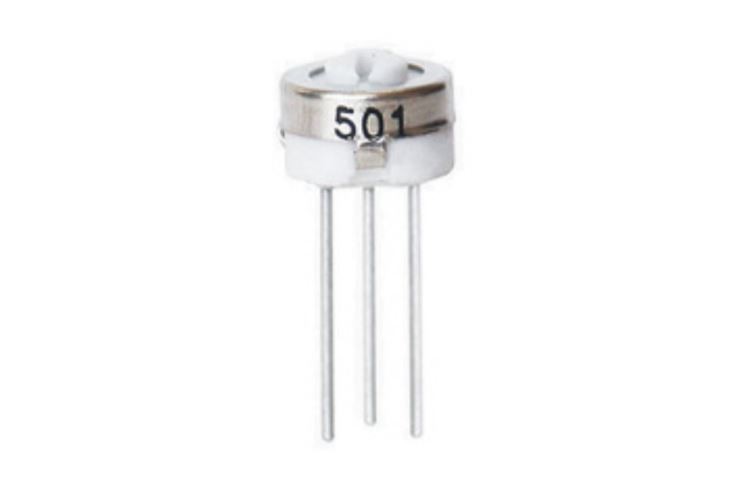Hey there! As a supplier of the 3329 Trimming Potentiometer, I often get asked about its mechanical shock resistance. So, I thought I'd write this blog to break it down for you in a simple and easy - to - understand way.
First off, let's talk a bit about what a trimming potentiometer is. A trimming potentiometer, like the 3329 Trimming Potentiometer, is a type of variable resistor. It's used to fine - tune electrical circuits, adjusting the resistance to get the right amount of current flowing through. It's a crucial component in a whole bunch of electronic devices, from audio equipment to industrial control systems.
Now, onto the main topic: mechanical shock resistance. Mechanical shock is basically a sudden acceleration or deceleration that a component might experience. This could happen when a device is dropped, bumped, or even during transportation. When a potentiometer is subjected to mechanical shock, it can potentially cause physical damage to its internal structure, which in turn can affect its electrical performance.
The 3329 Trimming Potentiometer is designed to handle a certain level of mechanical shock. The specific shock resistance value is typically measured in g (gravitational force). For the 3329, it can withstand a shock of up to a certain number of g for a short period. This is important because it means that the potentiometer can still function properly even if it goes through some rough handling.
One of the key factors that contribute to the 3329's shock resistance is its construction. It's built with high - quality materials that are strong and durable. The resistive element, for example, is made in such a way that it can absorb the impact of a shock without breaking or getting damaged easily. The wiper, which is the part that moves across the resistive element to change the resistance, is also designed to stay in place during a shock.
Let's compare the 3329 Trimming Potentiometer with some other popular trimming potentiometers on the market, like the 3386 Trimming Potentiometer and the 3362 Trimming Potentiometer. While all these potentiometers are used for similar purposes, their shock resistance can vary. The 3329 has been engineered to offer a good balance between shock resistance and cost - effectiveness.
The 3386, on the other hand, might have a higher shock resistance but could also come at a higher price. This could be a better option for applications where the device is likely to experience a lot of rough handling, like in military or aerospace equipment. The 3362, meanwhile, might be more suitable for less demanding applications where the shock requirements are not as high.
In practical applications, the shock resistance of the 3329 Trimming Potentiometer can make a big difference. For example, in automotive electronics, a potentiometer might be subjected to vibrations and shocks while the vehicle is in motion. If the potentiometer can't handle these shocks, it could lead to inaccurate readings or even complete failure of the system. With the 3329, you can have more confidence that the potentiometer will continue to work properly, ensuring the reliable operation of the automotive electronics.
Another application is in consumer electronics. Many consumer devices, like smartphones and tablets, are often dropped or bumped accidentally. If a potentiometer inside these devices has poor shock resistance, it could cause problems with the device's performance. The 3329's ability to withstand shocks helps to ensure that these consumer devices remain functional even after some rough treatment.
Now, you might be wondering how we test the mechanical shock resistance of the 3329 Trimming Potentiometer. We use specialized testing equipment to simulate different levels of shock. The potentiometers are placed in a testing fixture, and then a shock is applied to them. After the shock, we measure the electrical properties of the potentiometers to see if there have been any changes. If the potentiometer still meets the specified electrical performance criteria, it passes the shock test.
It's also important to note that the shock resistance of the 3329 can be affected by other factors, such as temperature and humidity. Extreme temperatures can make the materials more brittle, which can reduce the potentiometer's ability to withstand shocks. Similarly, high humidity can cause corrosion, which can also impact the shock resistance. So, when using the 3329 in different environments, it's important to take these factors into account.
In conclusion, the mechanical shock resistance of the 3329 Trimming Potentiometer is an important feature that makes it a reliable choice for a wide range of applications. Whether you're working on automotive electronics, consumer devices, or industrial control systems, the 3329 can handle a certain level of shock without compromising its performance.
If you're interested in purchasing the 3329 Trimming Potentiometer for your projects, I'd be more than happy to have a chat with you. You can reach out to start a discussion about your specific requirements and how the 3329 can fit into your applications. Let's work together to find the best solution for your electronic needs.
References


- General knowledge of potentiometer technology and industry standards.
- In - house testing data and research on the 3329 Trimming Potentiometer.



